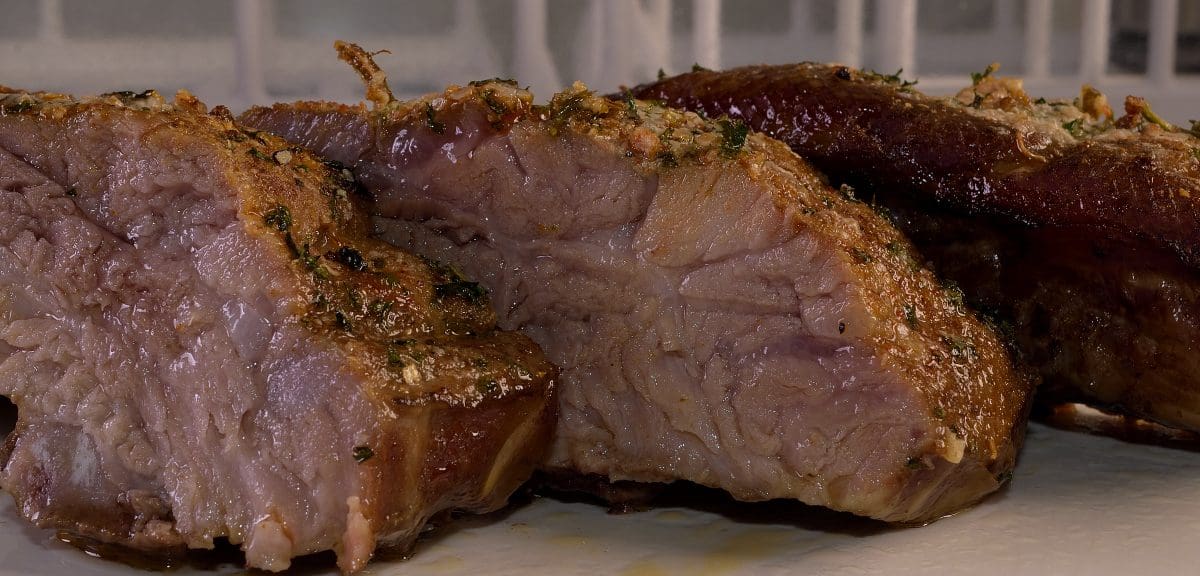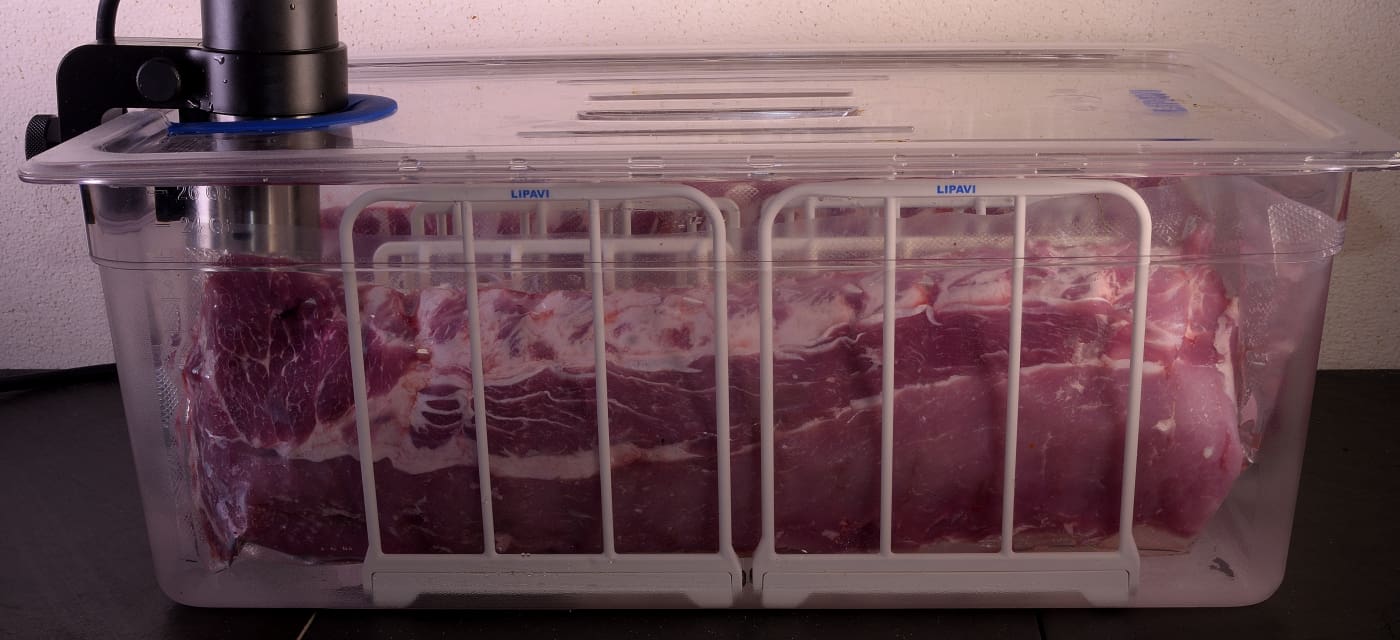Above: Lipavi C15 container, N15 polycarbonate racks. Lipavi C15L-UNIR lid.
Note: the picture above shows an entire rack of baby back ribs. Because of the unique characteristics of sous vide, the rack can also be portioned into smaller pieces, packaged separately and processed without altering the time/temperature guideline.
Actual prep time, 1 hour
Serves 3+ unless you’re in Texas
Level of difficulty: 2.25
Procedure:
Stage the ribs into dedicated vacuum bags. Seal and sous vide process @ 135 F/57 C for 18 hours.
While the ribs are processing, make the rub using the listed ingredients above. Set aside.
When the time has elapsed, submerge the package into iced tap water for half an hour to achieve 70 F/21 C. Refrigerate at 40 F/4 C until day of service. The ribs can be safely refrigerated in the sealed package for up to two weeks.
Day of service

Submerge the package in hot tap water (110 F/43 C) or a functioning sous vide bath to melt the gel. Place the package on a suitable Lipavi rack in a pan.
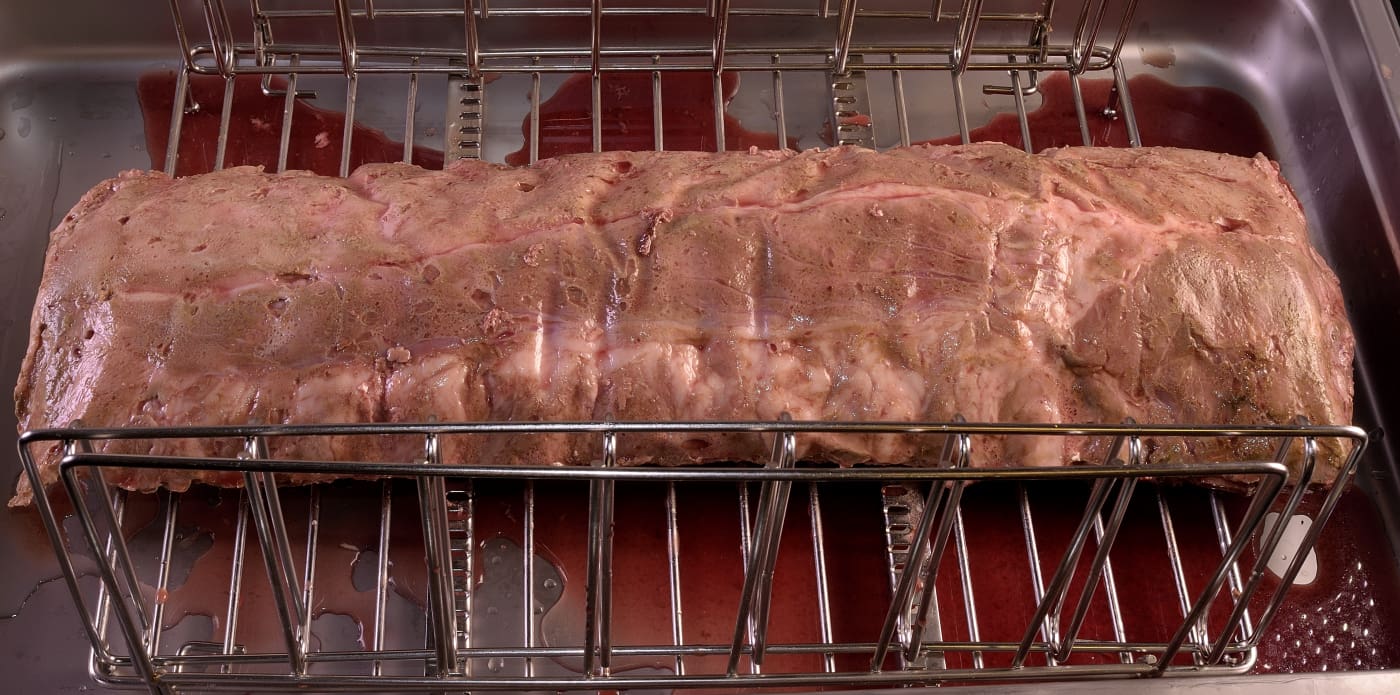
Remove the baby backs from the package and allow the juices to drain into the bottom of the pan. Line a sheet pan with aluminum foil.
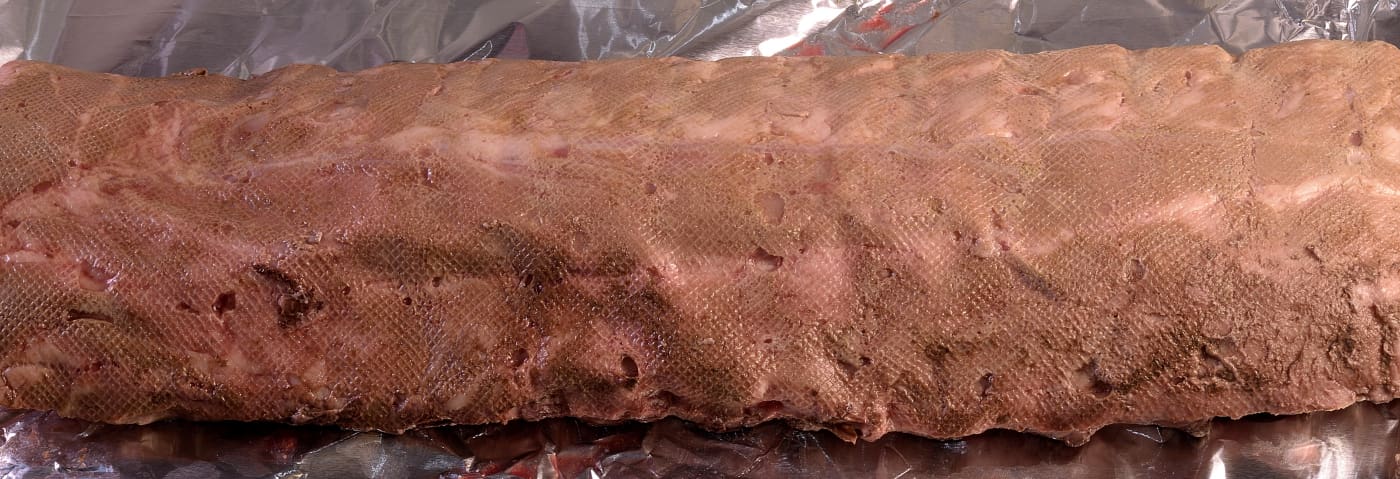
Transfer the ribs to the lined sheet pan.
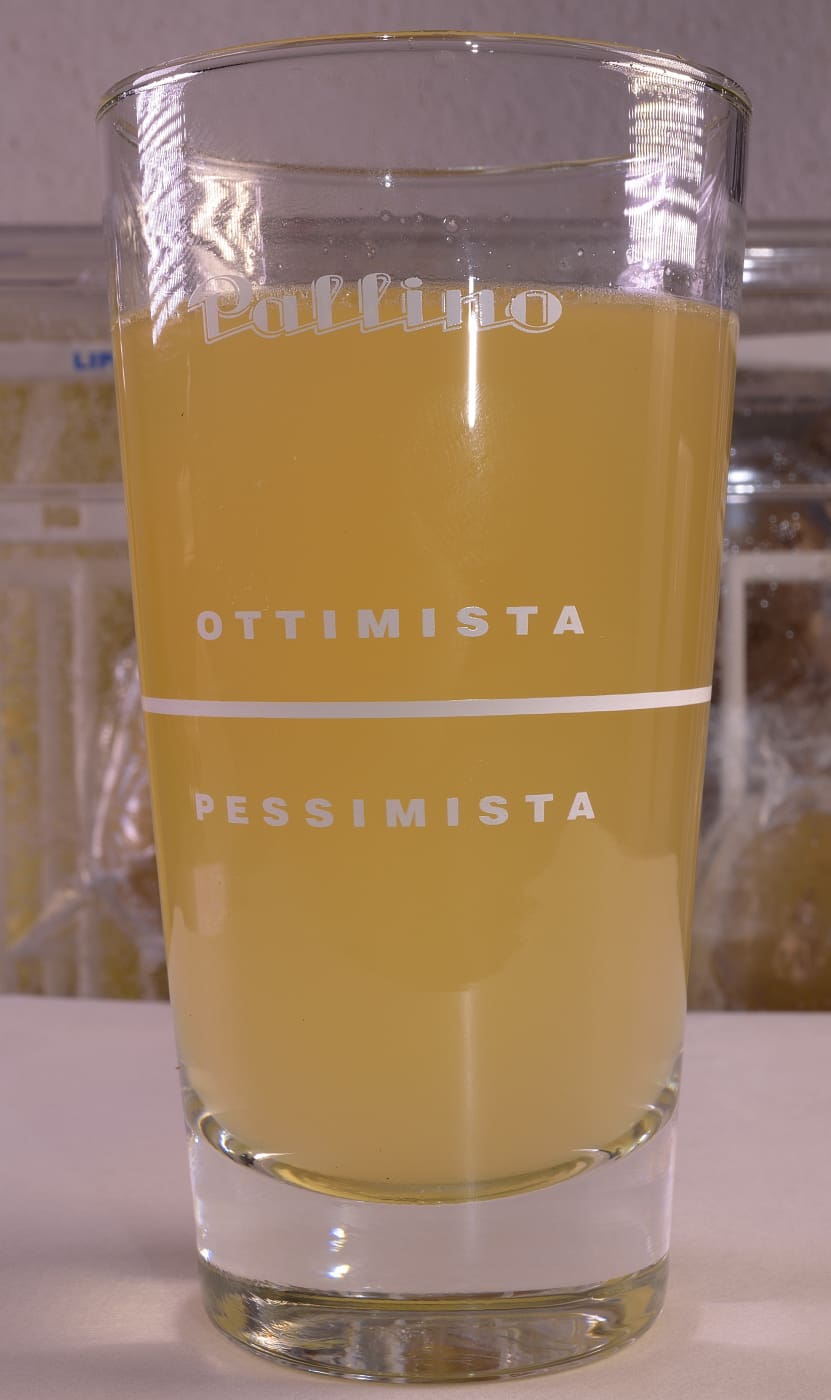
Harvest the juices and clarify according to the method explained HERE.

Pat the ribs dry with a paper towel.

Sprinkle powdered egg white on the top side of the ribs. Fresh egg whites can also be used–mix well with 1 oz/30 ml water.
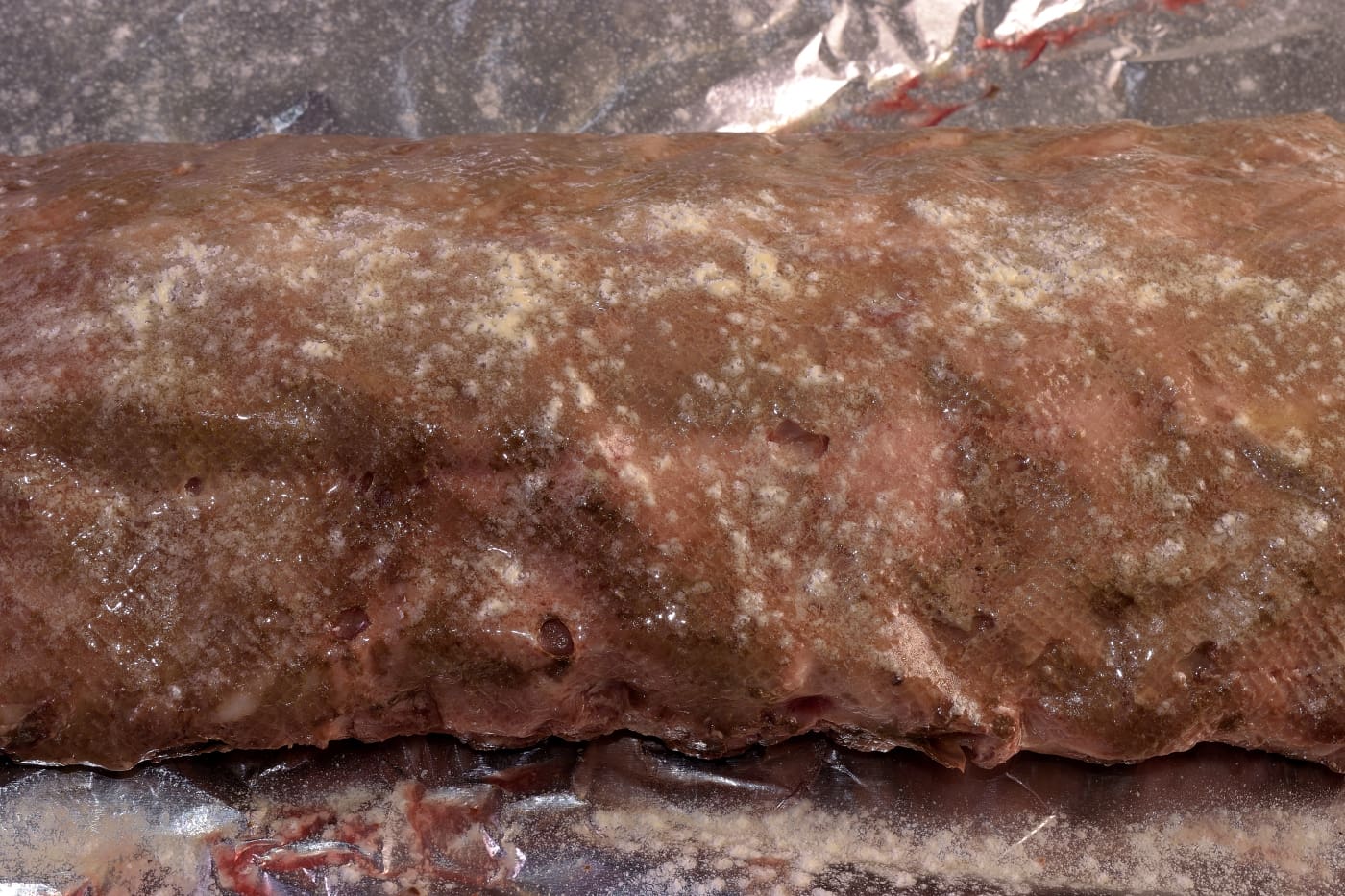
Use a spray bottle to moisten the egg whites–not necessary if you use fresh whites. This creates a sticky surface for spices to cling to.
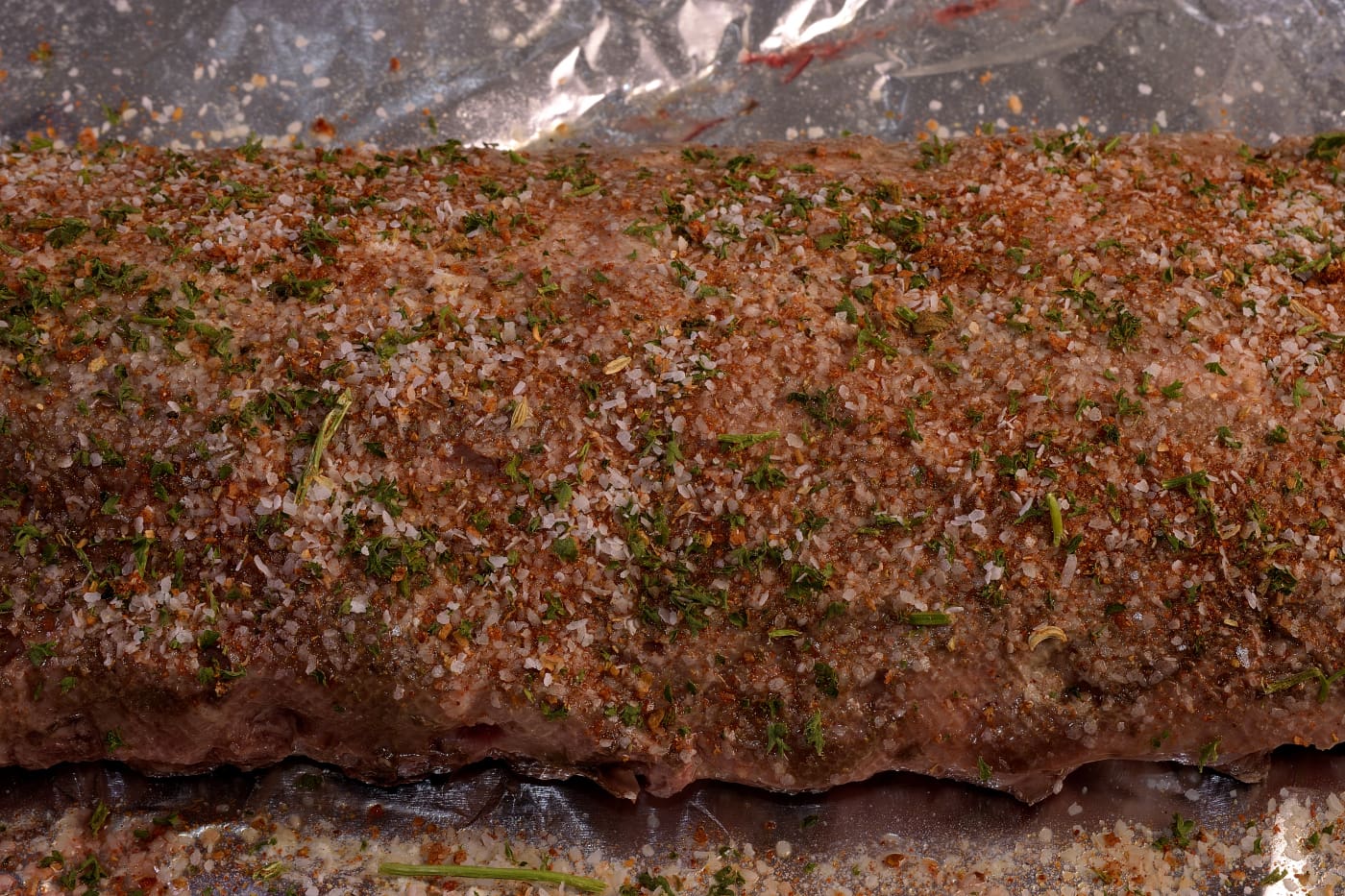
Sprinkle generously with the rub.
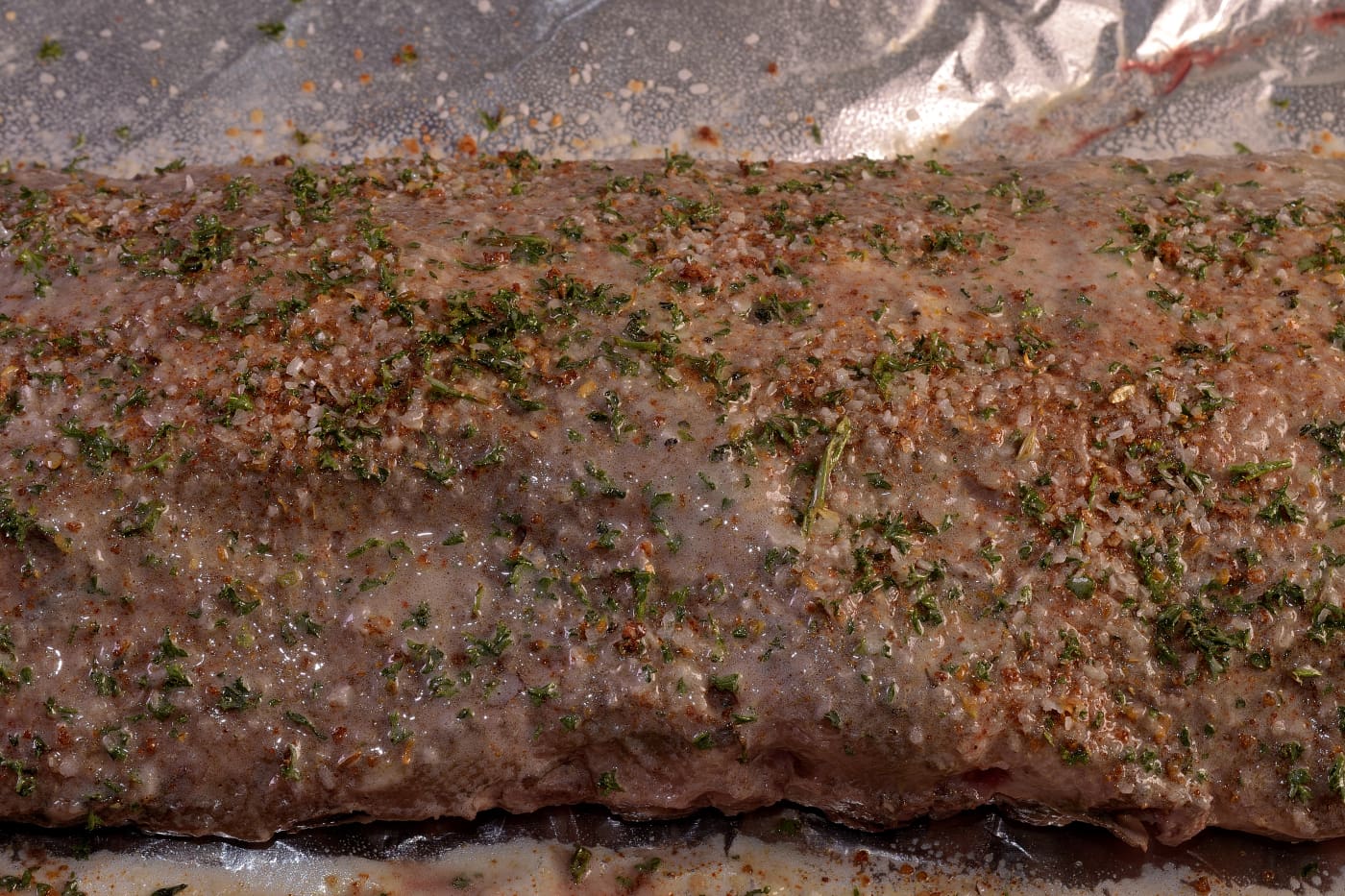
Spray (or drizzle) with vegetable oil.

Allow to rest for 15 minutes. Use the Sous Jus to make the Brisk BBQ Sauce.
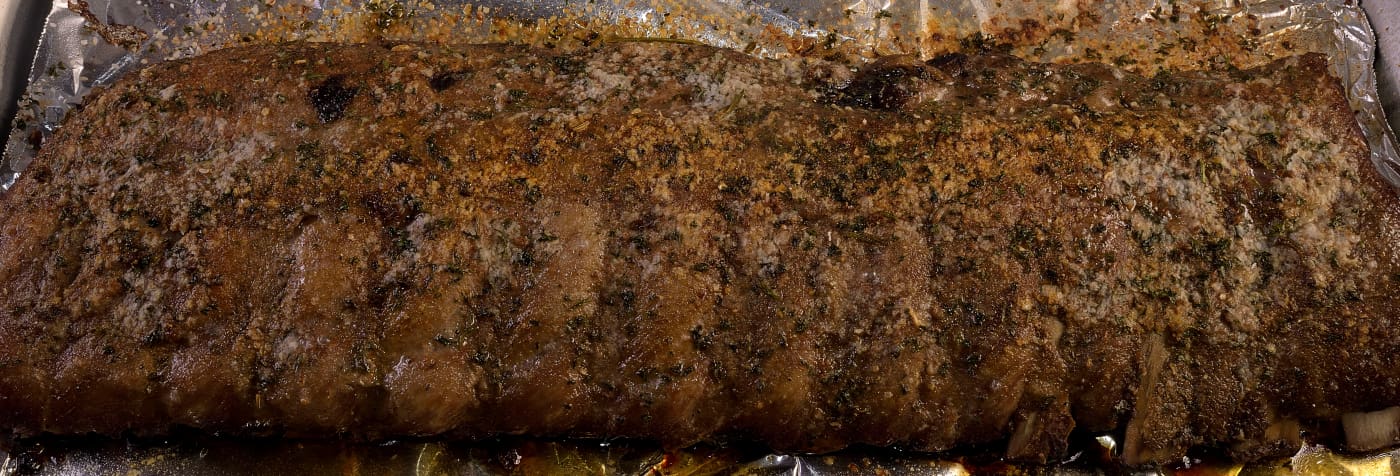
Stage the rack into the smoker and process at 185-225 F/82-107 C until the desired appearance is achieved–usually 3-4 hours.

Internal temperature should be at least 140 F/60 C. If preferred, this item can also be roasted indoors at 225 F/107 C for approximately 2 hours or until the desired appearance is achieved.

Many people judge doneness/tenderness by measuring the amount of bone exposed after the protein has pulled back from it. Considerably less so with Sous-B-Q because of the moisture preserving characteristics of the original sous vide processing.
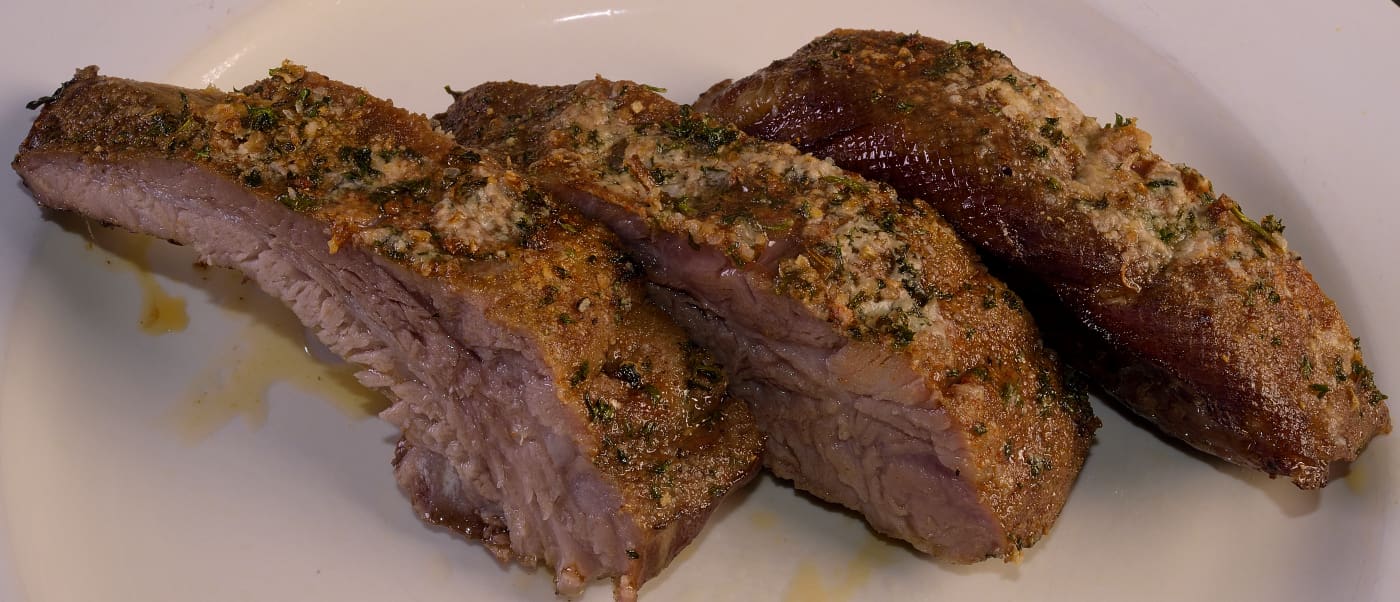
Evident, durable and tasty crust.

Vis HERE for the coleslaw with roasted corn recipe.
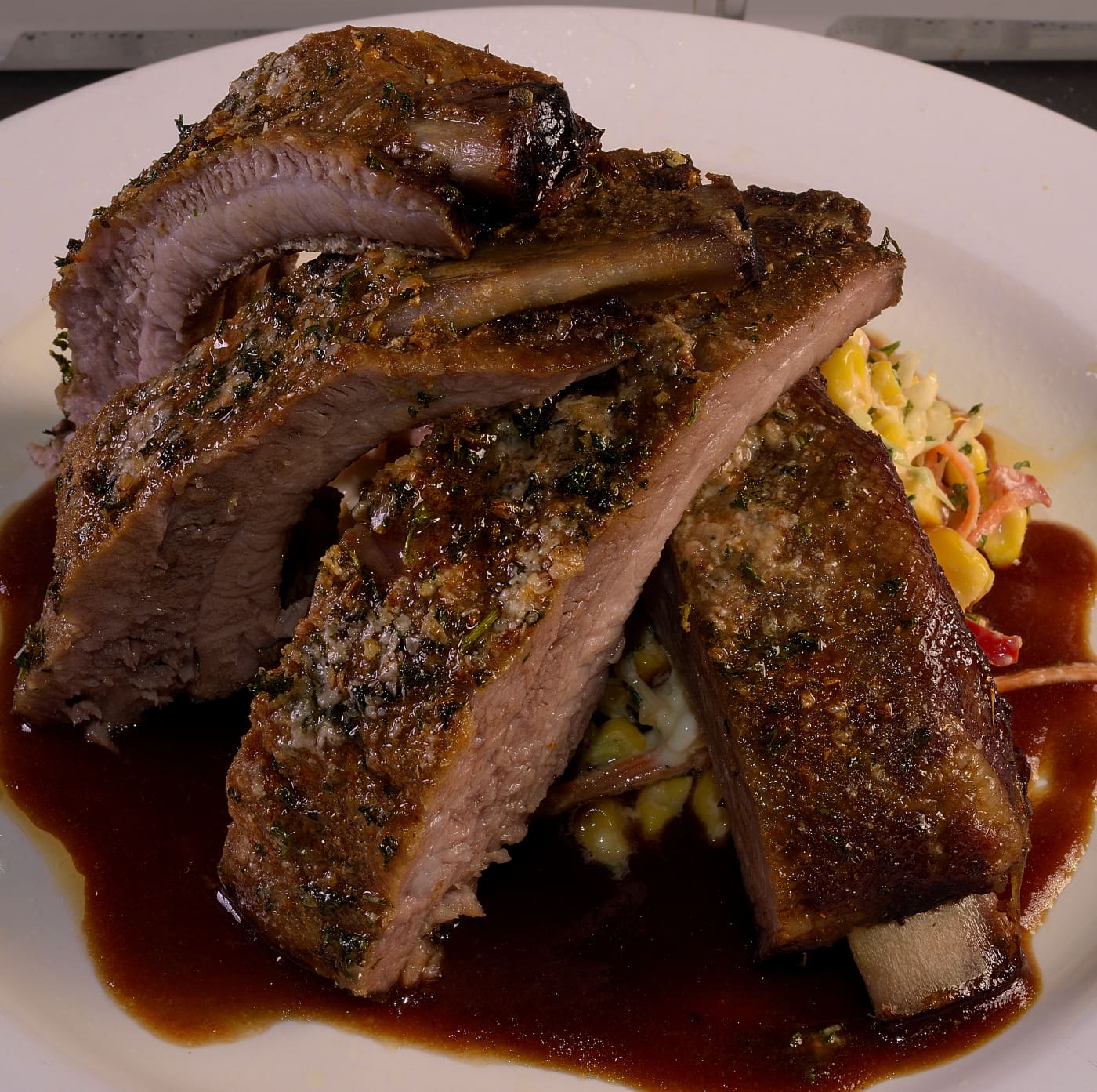
Pool the plate with the Brisk BBQ Sauce.

The flavors of the different components amaze.

Up close.
Norm King
Make sure to visit us live on Facebook at SVR–Sous Vide Resources; Low Temperature Pasteurization, Sous-B-Q™
